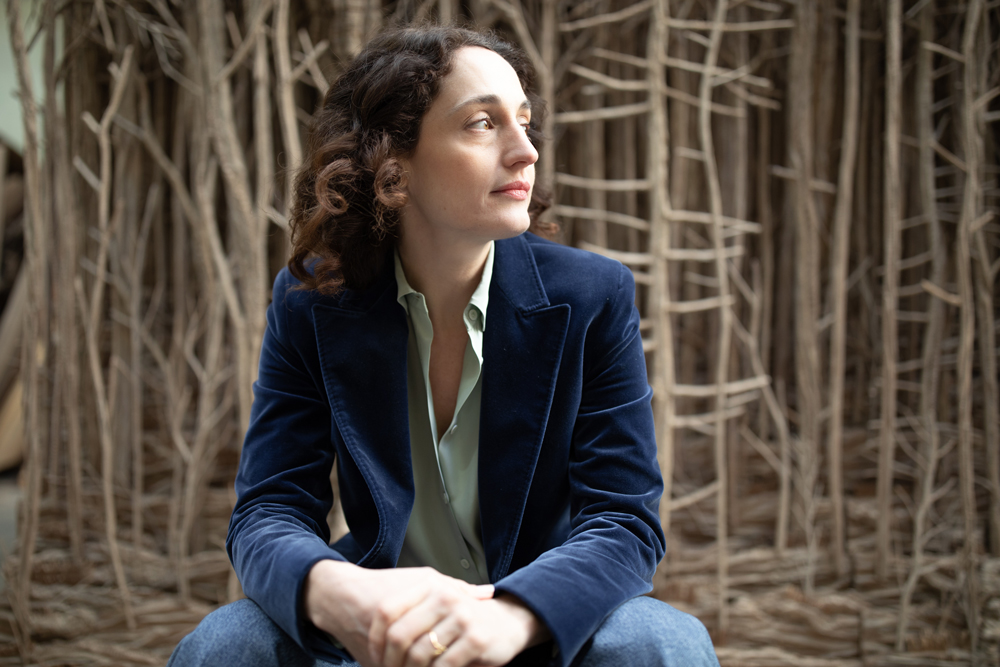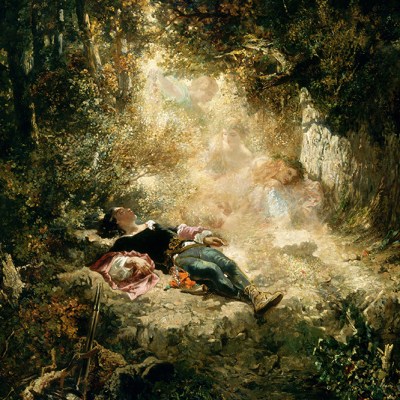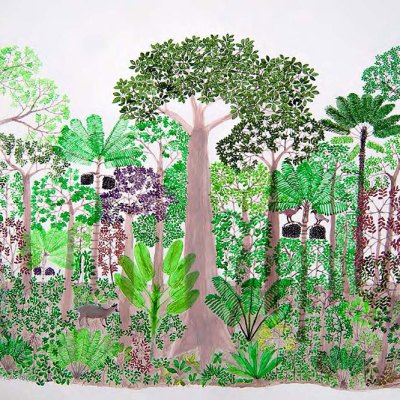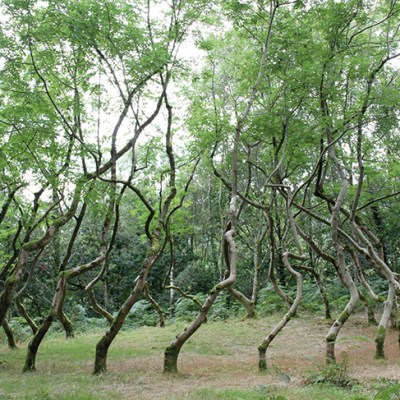There’s been a certain fizz of excitement around Eva Jospin this month. From 8–12 March, Jospin presented her commission for the champagne house Ruinart’s much-coveted Carte Blanche commission in the Carreau du Temple, formerly a covered market in the third arrondissement of Paris.
This was a particularly apt setting for Jospin’s work. Grottoes and follies have long played a part in her practice; the idea of a previously redundant architectural structure, repurposed as an arts space, is closely related to the themes Jospin is interested in. Follies (and for that matter, disused markets) are, she tells me, ‘useless architecture’. As such, Jospin suggests that they are ‘like very large-scale sculpture in nature.’
From the series Promenade[s] (2022), Eva Jospin. Courtesy Ruinart
![From the series Promenade[s] (2022), Eva Jospin. Courtesy Ruinart](https://apollo-magazine.com/wp-content/uploads/2023/03/023_Eva-Jospin_bfougeiroldec2022_031A6132_basse-def.jpg?resize=790%2C638)
When she left art school, she found herself casting around for materials to use: ‘I was going to do this in metal but how much does it cost? I was going to use fibreglass but I was allergic.’ It was hard to avoid ‘everything being about finding the means or the money to produce’, and so ‘I started to become very frustrated’, she says. But then she remembered all of the cardboard that surrounded her at art school and, before that, studying architecture – ‘and cardboard is really the material you can find everywhere.’
Jospin is best known for creating forest scenes out of delicate strips of carboard that are rich in detail and somehow give a sense of entering a magical land or seeing a story made real. The metaphorical potential of the forest is not lost on Jospin: ‘As a young artist you’re lost in a forest, because where is your path?’ she says. By embracing that sense of loss, she found a very clear direction, while also transforming a waste material into something of value.
‘The first step was to start with the wood and the first evolution of the work was to make those woods grow. Every time somebody was giving me a bigger wall I would do a bigger forest and I started to make it grow, grow, grow,’ she says. These forests have been exhibited at the Louvre and the Musée de la Chasse et de la Nature. For the Carte Blanche, she created one of her biggest forests to date.
From the series Promenade[s] (2022), Eva Jospin. Courtesy Ruinart
![From the series Promenade[s] (2022), Eva Jospin. Courtesy Ruinart](https://apollo-magazine.com/wp-content/uploads/2023/03/005_Eva-Jospin_bfougeiroldec2022_MONTAGE-4-SECTIONS_basse-def.jpg?resize=790%2C335)
It is typical of Jospin, who has a fascination with Italian baroque gardens, to recast nature as a form of ornamentation – to see the natural in terms of art. Jospin’s work is essentially hybrid – she is evokes an 18th-century sensibility by means of contemporary techniques. This gives her work its distinctive quality, while also operating as a metaphor for the importance of diversity in nature.
At the heart of the forests, temples and grottoes she has created for Carte Blanche – which will now tour to major art fairs worldwide – is the belief in the importance of creating new worlds for us to visit. ‘I am interested by the fact that we need to create false worlds to understand the real one,’ she says. ‘It’s a very big question, why we do that. We don’t need to do it. It’s stupid and crazy, in a way. But it’s so beautiful and nice and so enjoyable.’



